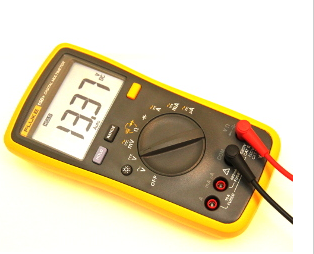Introduction
One of the bad things about electricity is that it is mostly invisible: unless the voltages or currents are very high, it mostly flows invisibly through wires, it's existence only implied by a lighted up LED, a beeping speaker, an LCD that indicates something or another secondary effect. Normally, this is what we want: the invisibility of electricity makes it very easy to integrate it into any project without having to think about secondary effects.
When troubleshooting, however, this can be a pain in the ass. That is the reason why one of the first things a hobbyist buys is a multimeter, which essentially is nothing more than a device that quantifies these invisible electricity streams by letting them flow through it. Most beginners can get away with a cheapie multimeter costing only a few bucks: as long as you only use them on your low-voltage powered project and don't mind them being off by a bit, these can be quite sufficient. They may be prone to breaking, but getting a new one is cheap and easy.
At a certain point, however, you get sick of the stack of cheap meters with their dead batteries, worn out rotary buttons, lack of autoranging and faded displays. There's also the safety aspect: maybe you're working with mains now, and who knows where the fiery-hot remains of that shoddy shunt end up if you happen to have your meter still in the 10A mode when sticking the measuring leads on the mains to measure the voltage?
For me, that point came about a fair few years ago. I still worked with mostly digital things, so I didn't need that much functionality, but I was on the market for a sturdy, safe multimeter. Around that point, Fluke started making multimeters for the Chinese and Indian markets: they were pretty cheap but well-rounded and had all the safety you'd expect of a Fluke. Also, because of gray import by eBay and sites aimed at selling Chinese products to the world, they were well-obtainable. I opted to invest around $45 in a Fluke 17B, and I have been very happy with it ever since. It is reliable, has quick continuity testing, good safety and overall all the features I needed. If I wanted, I could even open it up and hack a serial port to it to do data-logging.
For More Details: Fluke 15B+ WiFi – Introduction


